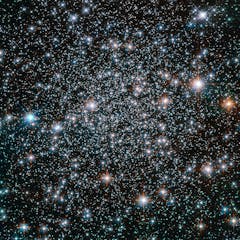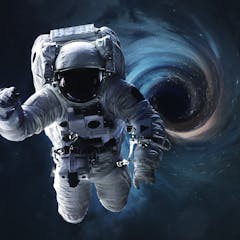
Articles on Astrophysics
Displaying 81 - 100 of 215 articles

One of Einstein’s weirder predictions is that massive, spinning objects exert a drag on space-time itself. Now an orbiting pair of unusual stars has revealed this effect in action.

‘The size, the grandeur, the peacefulness of being in the dark’: what it’s like to study space at Siding Spring Observatory
The Conversation, CC BY54.3 MB (download)
Three hours north-east of Parkes lies a remote astronomical research facility, unpolluted by city lights, where researchers are trying to unlock some of the biggest questions about our Universe.

There is a massive black hole in the center of the Milky Way galaxy. Measurements of star orbits near this black hole suggest that there may be a second companion black hole nearby.

A recent experiment with atomic nuclei is hard to square with our current understanding of physics.

Astronomers using a new technique to hunt black holes found one 70 times as heavy as the Sun

Little bits of Jupiter’s Great Red Spot seem to be flaking off. Is it a sign of the demise of this enigmatic red cloud, or just a consequence of atmospheric chaos we can’t see from above?

Radio flare may be the result of a giant star orbiting some unusual object – a combination we have never seen before.

Mysterious cosmic flashes known as gamma-ray bursts are caused by the death throes of massive stars.

A study has suggested that the universe is curved like a sphere rather than flat, which may unleash a major crisis in cosmology.

Stars begin their life inside very large, fluffy clouds of space dust and gas called nebulae.

The Canadian Long Range Plan 2020 for astronomy and astrophysics builds on Canadian research’s previous success to extend Canada’s role.

In an age when women were rarely allowed in observatories, Margaret Burbidge changed how we saw the stars.

Matt Agnew is on the hunt for love as star of the new Bachelor Australia series. But whoever he picks (and he already has, apparently) will have to compete with TESS. So who, or what, is TESS?

If you got too close to a black hole, it would suck you in and you’d never be able to escape, even if you were travelling at the speed of light.
This point of no return is called the event horizon.

What’s the next ‘giant leap’ for humankind in space? We asked 3 space experts
The Conversation, CC BY27.3 MB (download)
What's the next thing that will blow us away or bring us together the way the Moon landing did in 1969? Moon mining? Alien contact? Retirement on Mars? Three space experts share their predictions.

The short answer is yes, but it’s really, really difficult.

It’s true that here on Earth, if you want to burn something you need oxygen. But the Sun is different. It is not burning with the same kind of flame you would have on Earth if you burned a candle.

Exoplanet discovery can help us work out how the Earth will end its days.

Feel like visiting another star system or dimension? You can do this by traveling through a spacetime portal of a black hole. But you better choose carefully. All black holes are not created equal.

Long ago in the distant past, our entire Universe was microscopic – just like an atom – and obeyed completely different rules of cause and effect.





